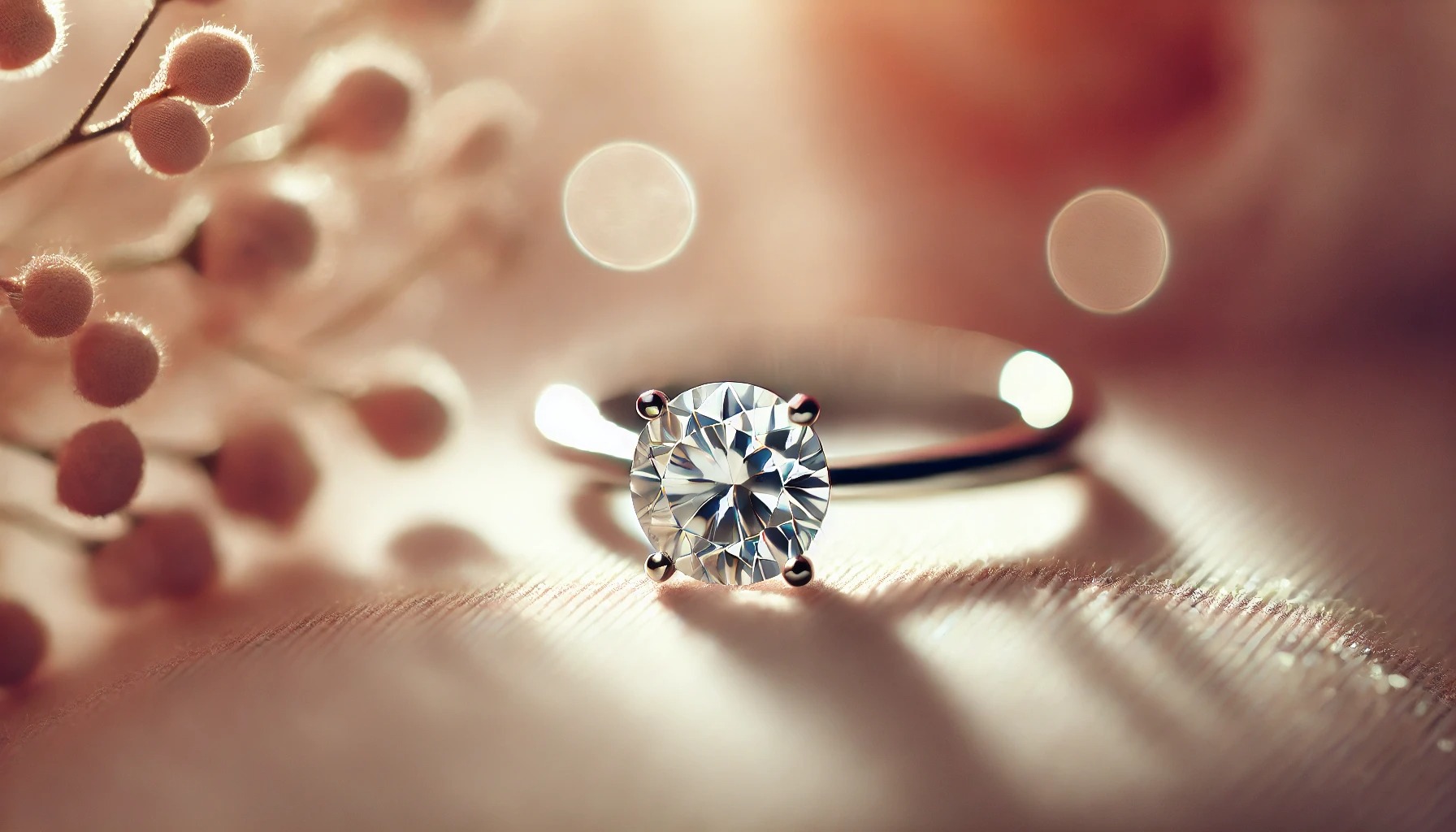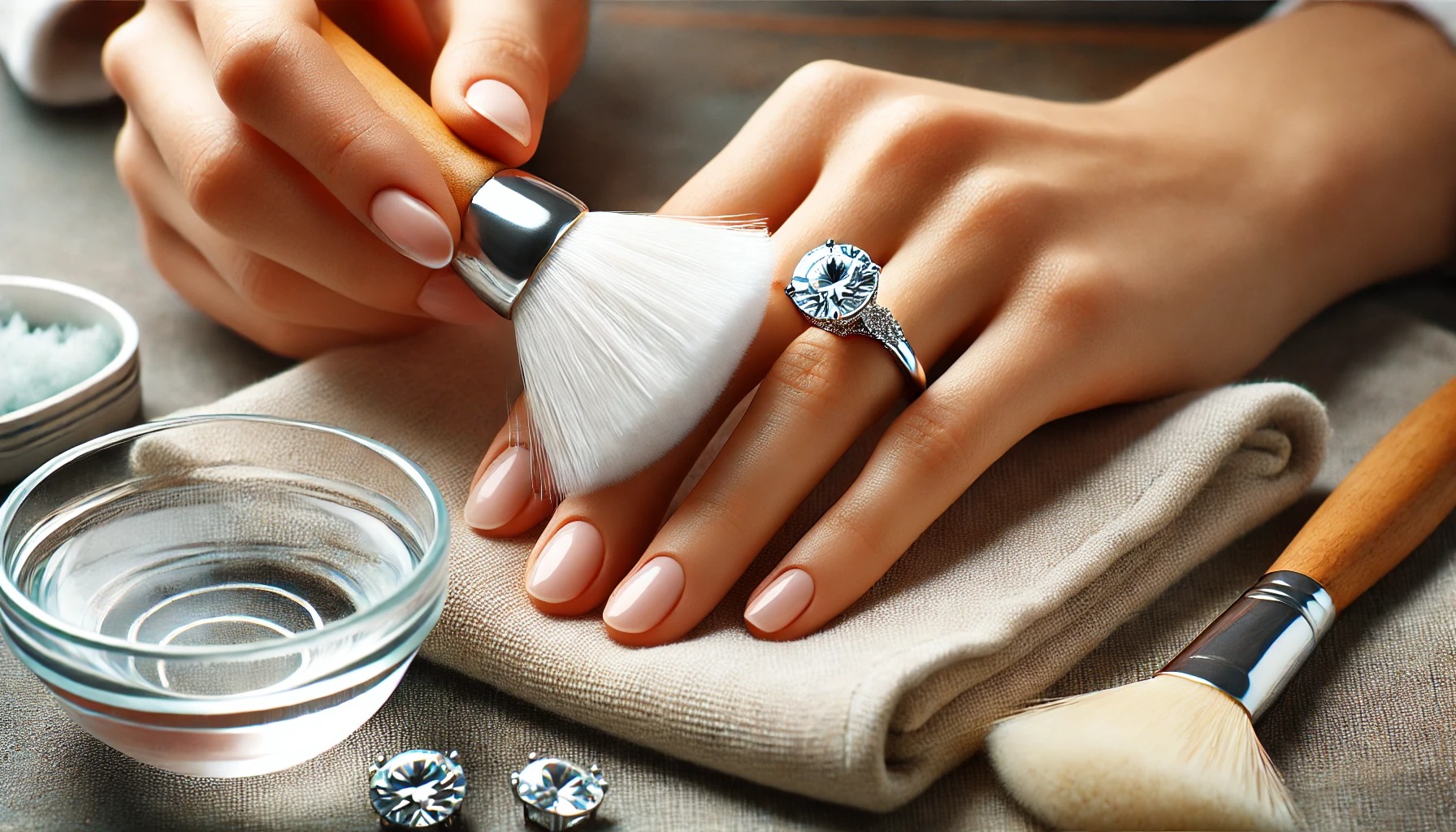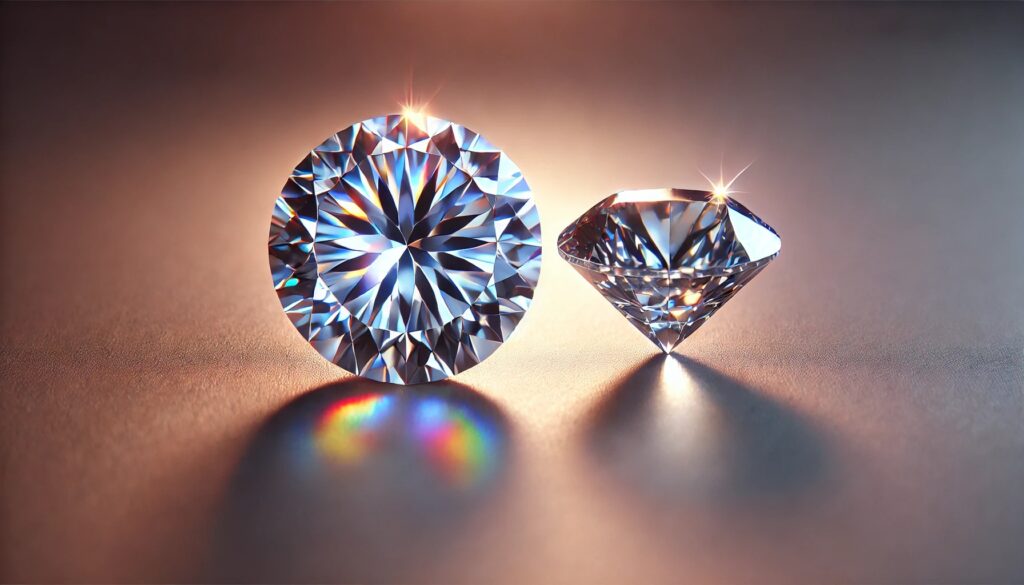Moissanite, a gemstone lauded for its exceptional brilliance and striking similarity to diamonds, has become an increasingly popular choice among jewelry buyers. While diamonds have long been considered the classic option for engagement rings and high-end jewelry, moissanite offers an alluring alternative that combines brilliance, sustainability, and affordability. In this comprehensive guide, we’ll explore every facet of moissanite—from its origins and qualities to buying considerations, ethical implications, and more. If you’ve ever been curious about moissanite or are considering it for your next jewelry purchase, read on to discover everything there is to know about this captivating gem.
What is Moissanite? Discovering the Origins of this Mesmerizing Gemstone
Moissanite is a rare and captivating gemstone known for its extraordinary brilliance and sparkle. Initially discovered in 1893 by Nobel Prize-winning scientist Henri Moissan, this mineral was found in a meteorite crater in Arizona. At first, it was mistaken for diamond due to its similar appearance, but upon closer examination, Moissan realized it was a completely different mineral. Natural moissanite is exceptionally rare and, for practical purposes, all moissanite used in jewelry today is lab-created.
The mineral name for moissanite is silicon carbide (SiC), a compound consisting of silicon and carbon. The properties of moissanite lend it incredible fire and brilliance, even surpassing that of a diamond in some regards. In its lab-created form, moissanite is now manufactured to meet jewelry-grade standards, providing a near-perfect replica of its natural form while offering a more eco-friendly and sustainable alternative to diamonds.
Moissanite vs. Diamond: Key Differences, Similarities, and Why It Matters
One of the most common questions among gemstone enthusiasts is how moissanite compares to a traditional diamond. While moissanite closely resembles a diamond in appearance, there are several key differences that set it apart. Below, we will delve into the essential characteristics of each, including physical appearance, durability, cost, and more.
Brilliance and Fire: What Makes Moissanite Shine So Bright?
Brilliance refers to the brightness that results from light reflecting off the surface of a gemstone. Moissanite’s refractive index (2.65-2.69) is significantly higher than that of a diamond (2.42), meaning it disperses more light and creates a greater degree of sparkle. This superior light dispersion gives moissanite its signature “rainbow effect,” a unique characteristic that sets it apart from other gems. Diamonds, by contrast, produce a more classic white sparkle, which some prefer for its subtler glow.
Hardness and Durability: A Sturdy Alternative to Diamond
On the Mohs scale of hardness, which measures a material’s ability to withstand scratches, diamonds rank at the top with a score of 10. Moissanite isn’t far behind, with an impressive score of 9.25, making it one of the hardest gemstones available and highly resistant to scratches and abrasions. This makes moissanite an excellent choice for everyday wear, especially for engagement rings or pieces that will be worn frequently.
Color and Clarity: Nuances in Appearance
Though moissanite is often created to appear colorless, there may still be subtle undertones, typically warmer shades such as yellow or gray. Lab-created moissanite has improved significantly over the years, with the highest quality versions now achieving a near-colorless look comparable to a diamond graded D, E, or F on the diamond color scale. In terms of clarity, moissanites are generally eye-clean, meaning they do not have visible inclusions without magnification.
Price Differences: An Affordable and Ethical Choice
One of the most compelling reasons people opt for moissanite over diamond is the significant price difference. Moissanite offers similar beauty and durability at a fraction of the cost—often 80-90% less than diamonds of comparable size. For buyers looking to maximize size and quality without breaking the bank, moissanite emerges as a powerful contender. Additionally, because all moissanite is lab-grown, buyers can feel confident that their purchase is free from any ethical issues, such as conflict mining or labor exploitation.

The Benefits of Choosing Moissanite for Engagement Rings and Jewelry
Moissanite has made significant strides in popularity over the last few years as more people begin to understand its numerous advantages. Here are some of the key benefits of choosing moissanite for your engagement ring or other jewelry pieces:
- Ethical and Sustainable: Moissanite is grown in laboratories, eliminating the need for mining and the associated negative impacts on the environment. Unlike diamonds, which can be linked to controversial labor practices and conflict zones, moissanite is completely conflict-free, allowing buyers to make an ethical choice when purchasing jewelry.
- More Brilliance for Your Buck: Moissanite’s brilliance and fire make it one of the most dazzling gemstones on the market. With a price tag significantly lower than that of a diamond, buyers can opt for larger moissanite stones without sacrificing beauty.
- Durability for Daily Wear: The robustness of moissanite, with its 9.25 hardness rating, makes it ideal for those who want their rings or other pieces of jewelry to stand the test of time.
- Lower Environmental Impact: Mining diamonds has a significant impact on the environment, often resulting in soil erosion, deforestation, and the destruction of ecosystems. Moissanite is a greener alternative, as it is lab-grown, reducing the environmental footprint that comes with gemstone extraction.
How to Choose the Right Moissanite: Important Considerations for Buyers
When considering a moissanite gemstone for your jewelry, there are several important factors to keep in mind. Let’s look at the main considerations:
Moissanite Shapes: Finding the Perfect Cut
Moissanite comes in a variety of cuts and shapes, giving buyers a range of options to match their personal style. From classic round brilliants to more unique cuts like emerald, pear, and oval, there is a moissanite shape for every taste.
Size and Carat Weight: Bigger Isn’t Always Better
Unlike diamonds, moissanite is generally measured by its millimeter dimensions rather than by carat weight, as moissanite is lighter than diamond. It’s crucial to choose a size that not only fits your budget but also complements the setting and style of the jewelry piece.
Quality Grades: Standard vs. Premium Moissanite
Moissanite is graded on color and clarity, similar to diamonds, though the standards are slightly different. You may encounter grades like “Premium” and “Super Premium.” Premium moissanite typically exhibits a faint warmth, whereas Super Premium moissanite has a clearer, more diamond-like appearance.
Moissanite Engagement Rings: Popular Settings and Styles
Moissanite engagement rings come in an array of styles, much like their diamond counterparts. Below, we explore some popular engagement ring settings for moissanite:
- Solitaire Settings: Featuring a single moissanite stone, the solitaire setting remains one of the most popular choices for engagement rings due to its timeless and adaptable design.
- Halo Settings: A halo consists of small accent stones surrounding the center moissanite, enhancing its size and brilliance.
- Three-Stone rings: The three stones are said to represent the past, present, and future of a relationship, making this design particularly meaningful for engagement rings.
- Vintage and Antique-Inspired Designs: Moissanite looks stunning in vintage-inspired settings, adding character and a touch of romance to the piece.

Maintaining Your Moissanite Jewelry: Care Tips and Cleaning Advice
Proper care is essential to maintain its sparkle and brilliance over time. Here are some tips:
Regular Cleaning: Simple Steps to Keep It Sparkling
To keep your stone looking its best, clean it regularly with warm water, mild dish soap, and a soft brush. Avoid harsh chemicals, which could damage the setting or cause dullness.
Avoid Exposure to Chemicals
Like all fine jewelry, moissanite should be removed when using cleaning agents, swimming in chlorinated pools, or applying lotion and perfume.
Professional Cleaning and Inspection
For a deep clean, have your moissanite jewelry professionally cleaned once a year. A professional jeweler can also inspect your setting to ensure it is secure and free of damage.
The Evolution of Moissanite: A Modern Love Affair
Moissanite has evolved significantly since its initial discovery. Here’s a look at its journey:
- The Rise of Lab-Grown Gems: Lab-grown moissanite has democratized access to high-quality gemstones, making it an appealing choice for ethically conscious buyers.
- Celebrity Influence and Pop Culture: Celebrities and influencers have played a significant role in boosting moissanite’s popularity, with many choosing this radiant stone for engagement rings or red-carpet jewelry.
- Embracing Individuality in Jewelry Choices: Moissanite offers a distinct but classic look, appealing to those who want to break away from traditional diamonds without sacrificing beauty.
Frequently Asked Questions About Moissanite
| Question | Answer |
|---|---|
| Is Moissanite a Natural Stone? | While natural moissanite does exist, it is incredibly rare and not feasible for jewelry use. Virtually all moissanite gemstones on the market today are lab-created. |
| Does Moissanite Look Fake? | Moissanite is frequently mistaken for diamond due to its similar appearance, but it has a unique fire and brilliance that can differentiate it from diamonds. |
| How Long Will Moissanite Last? | Moissanite is one of the hardest gemstones, second only to diamonds. It is incredibly durable and resistant to scratching, making it a lasting choice for jewelry that can be worn every day. |
| Will Moissanite Retain Its Sparkle Over Time? | Yes, moissanite retains its brilliance and sparkle over time. Proper care and regular cleaning can keep your moissanite jewelry looking as stunning as the day you bought it. |
| Can Moissanite Fool a Jeweler? | Experienced jewelers with the proper tools can easily tell the difference between moissanite and diamond. However, to the untrained eye, the differences are often difficult to discern. |
Why Moissanite is a Brilliant Choice
Moissanite has rightfully earned its place as one of the most sought-after alternatives to diamonds. With its unparalleled brilliance, exceptional durability, and ethical sourcing, moissanite is an ideal option for those looking for a stunning, long-lasting gemstone. Whether you’re shopping for an engagement ring, a beautiful pair of earrings, or a pendant that stands out, moissanite brings style, value, and peace of mind.

